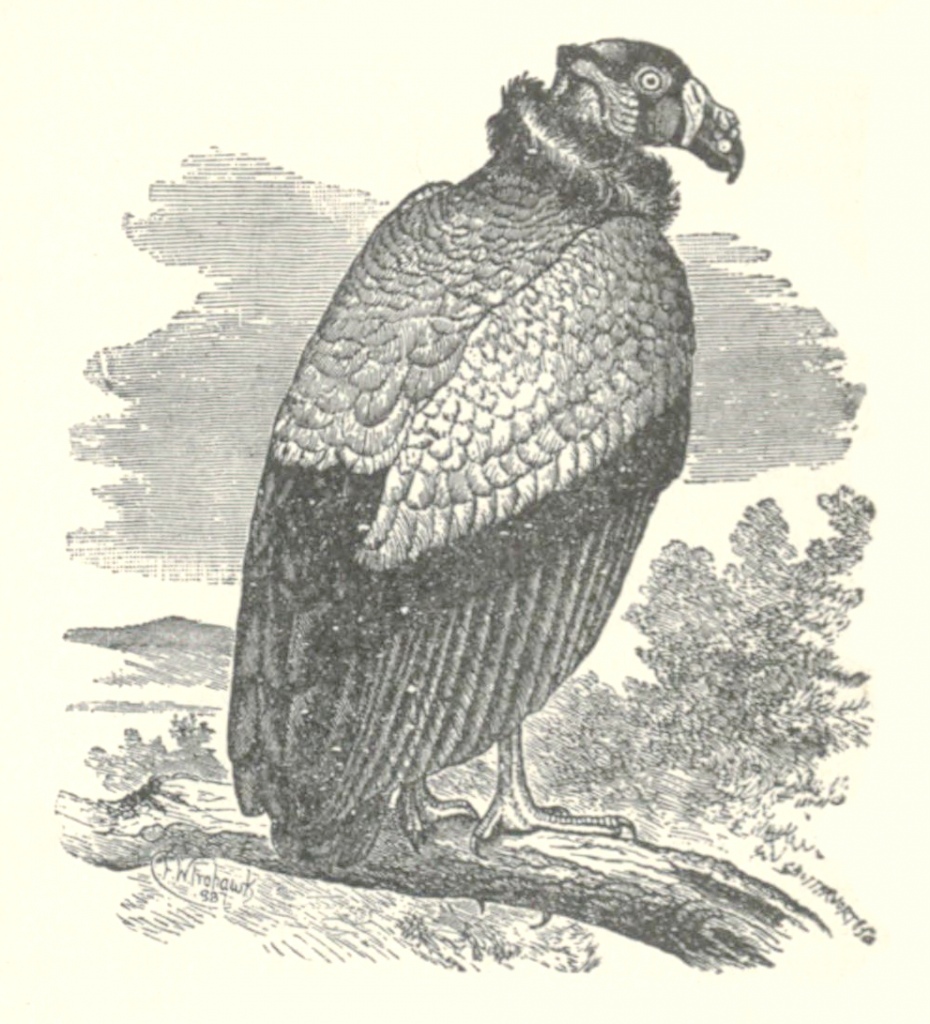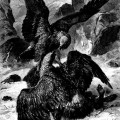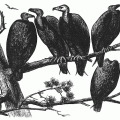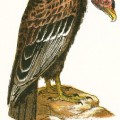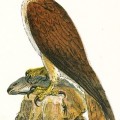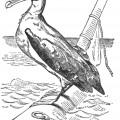King vulture drawing by Frederick William Frohawk (1861-1946) from 1887. Frohawk was an English zoological artist and lepidopterist. A lepidopterist is someone who studies moths and butterflies. And, yes, I had to look that one up. He is more well-known for his books on British butterflies but he was one of the many scientists and experts who contributed to the 11th encyclopedia from 1911.
The king vulture, or Sarcoramphus papa, is generally found in Central and South America. It tends to live in tropical lowland forests. This vulture is the only surviving member of the genus Sarcoramphus – perhaps why we have Frohawk to thank for this drawing. He worked on several books that featured extinct bird species.
King vultures are the third largest of the New World vultures – only two species of condors are larger. They are generally 26-32 inches long and have wingspans of up to 7 feet. Male and female birds are about the same size and have the same coloring. It does, however, take 5-6 years before they attain their full coloring and adult plumage.
While this bird drawing is only done in black on aged paper-colored background, this vulture is particularly colorful. The feathers are primarily white and black. But, the head is brightly colored with reds and oranges too.
King vultures figured prominently in the Mayan and Aztec cultures. Its head was featured on a god, with a human body, who carried messages between humans and other gods. The bird’s head was also used to represent Cozcacuauhtli, the thirteenth day of the month in the Aztec calendar.
This drawing shows the entire bird of prey perched on a tree branch.
If you would like to add this vintage vulture drawing to your project, you might want to click on the image shown above to access the full-sized version of this image.
This image is copyright free and in the public domain anywhere that extends copyrights 70 years after death or at least 120 years after publication when the original illustrator is unknown.
